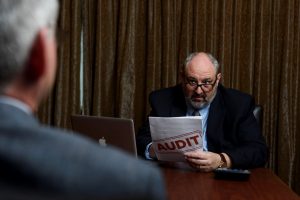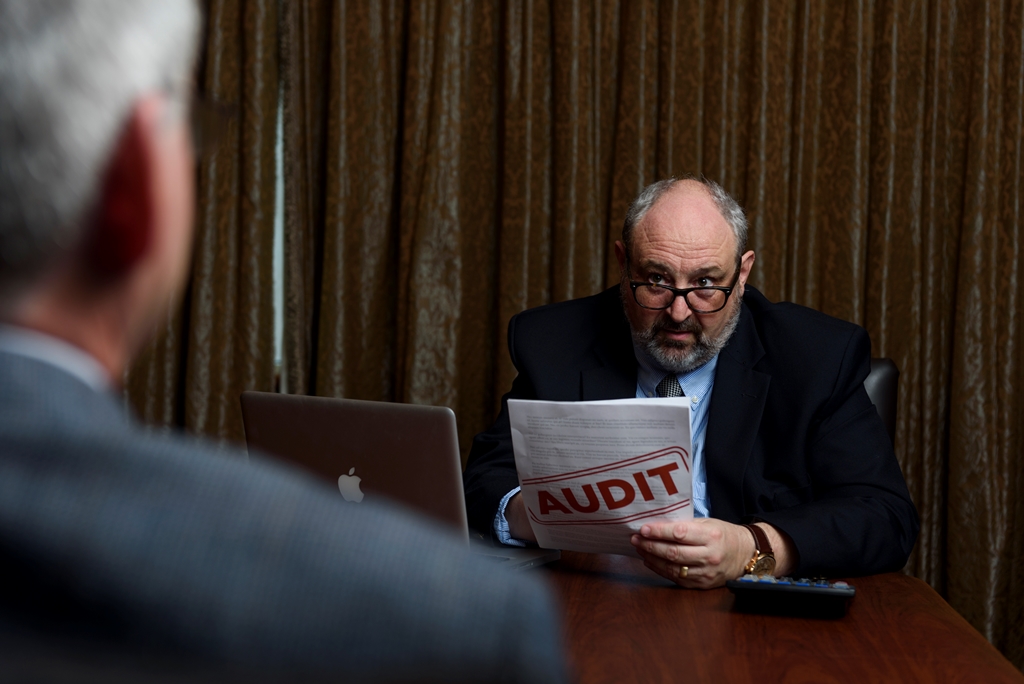Overreliance on electronic communication leads to inaccurate financial statements, research shows
By Edith Parten
Photos by Jeff Hansen

The Enron debacle in 2001 is one of the biggest financial audit failures in U.S. history. Enron and its hired accounting firm defrauded shareholders, which led to its bankruptcy and demise.
Employees and shareholders lost billions in stocks and pensions. Thousands of workers lost their jobs.
The Sarbanes-Oxley Act was enacted the following year to increase the accountability of auditing firms and force auditors to remain independent of their clients.
A similar corporate accounting scandal occurred in Alabama in 2005 when HealthSouth’s founder and former CEO Richard Scrushy was tried under the Sarbanes-Oxley Act for allegedly altering HealthSouth’s financial returns.
Jobs, stock value, pensions, a company’s survival—are all in jeopardy when the books don’t balance.
And nobody knows this better than one of the nation’s most prolific accounting researchers, The University of Alabama’s Dr. Rick Hatfield.
He recently conducted research that provides insight into some of the reasons behind auditing errors. His work delves into how modes of communication with clients (face-to-face or computer mediated) and generational differences impact the accuracy of audits.
Multiple audit firms have incorporated his research into their firm training as well as their audit methodology “best practices.”
Hatfield examined how the interaction between staff-level auditors and those in client management affect the auditors’ perceptions and influence decisions regarding the collection of audit evidence.
When conducting field audits, staff–level auditors, who are usually younger, have extensive interaction with client management, who are typically older and more experienced.
Survey evidence collected suggests that the staff-level auditors are often “mismatched” with client management. As a result, the younger auditors might reduce the extent to which they collect information for the audit in order to avoid interactions with client management.
“The mismatch of a new generation of auditors with older, more experienced auditors, has led to errors in financial statements,” Hatfield says.

Hatfield’s research further shows that when staff-level auditors use e-mail communication with client management, it helps to mitigate the lack of information collected caused by the avoidance of in-person interactions.
However, in cases when the young staff auditors did not collect all of the evidence needed, about half of the participants in the research survey documented their findings in a vague or inappropriate manner.
“This would likely reduce the likelihood that reviewing auditors would find a problem,” says Hatfield. “Given the extent of evidence collected by young staff auditors, these findings have direct implications for audit process documentation and audit quality.”
The research also reveals the qualitative differences that occur when client meetings are conducted electronically versus face-to-face communication. It shows that older, more experienced auditors prefer face-to-face communication, which allows for gathering more content and follow-up questions. But there’s a downside.
“We found that the non-verbal cues in face-to-face meetings associated with deception—less eye contact, delayed responses, more ‘uhs,’ and raised voices—leads to increased professional skepticism,” says Hatfield.
The evidence suggests that younger auditors prefer electronic communication over face-to face.
“Auditors who communicate electronically request more documentation, but they ask fewer critical questions,” says Hatfield. “While trying to avoid interactions with clients, the younger staff-level auditors are reducing the extent to which they collect audit evidence due to the social avoidance factor.”

The study also finds that younger auditors are generally more accepting of evidence collected electronically than their older reviewing partners who sign off on the audits.
Hatfield’s research provides experimental and survey evidence that younger auditors are less inclined to meet face-to-face with the companies they audit, feeling intimidated by the confrontations and interruptions necessary to gather appropriate audit evidence.
The study also reveals that younger auditors tend to resort to electronic communication to ask questions necessary to resolve problems that surface during the audit.
“Using this channel of communication, the younger auditors typically ask fewer questions and engage in far less relationship building behavior,” explains Hatfield.
The result, according to the study, is that financial statements are more likely to contain errors, or purposeful exaggerations, which reduce the quality of this information, potentially causing harm to the investing public and employees of the company.
Hatfield is working on innovations to overcome the tendency to rely on computer-mediated communication by younger auditors and to improve audit quality in an audit environment where communication by computer is only likely to increase.
He’s also studying to see if the younger generation is better at uncovering deception in computer-mediated communication.
Dr. Hatfield is the Fayard Endowed Chair in UA’s Culverhouse College of Commerce.
